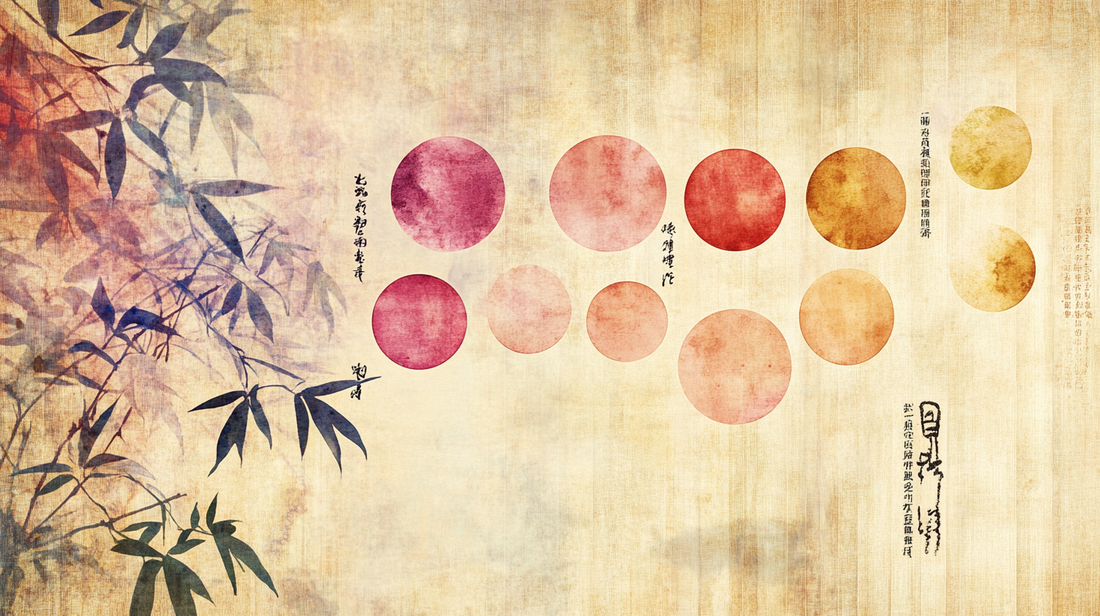
What These Cupping Marks Really Mean
Share
Introduction
If you've ever seen someone with circular marks on their back after cupping therapy, you may have wondered—what do those cupping marks actually mean? Are they bruises? Are they a bad sign? Should they be dark or light?
At Vital Duo, we often get questions about cupping marks from curious new patients. Understanding these marks is essential for recognising how cupping works, how healing progresses, and what your body is telling you.
In this blog, we’ll dive deep into the meanings behind different cupping marks, what they reveal about your health, and how they fit into Traditional Chinese Medicine (TCM) diagnosis and treatment planning.
First, Are Cupping Marks Bruises?
Short answer: No.
Cupping marks are not the same as bruises caused by trauma.
- Bruises result from blunt force injury breaking capillaries.
- Cupping marks result from suction pulling blood to the surface without breaking vessels.
British Acupuncture Council (2022): Cupping marks indicate circulatory and energetic activity—not tissue damage.
They are painless, temporary, and fade naturally within 3–7 days.
Why Do Cupping Marks Form?
Cupping creates negative pressure, which:
- Draws stagnant blood and metabolic waste toward the surface
- Stimulates fresh blood flow to nourish muscles and fascia
- Triggers a local immune response (natural healing boost)
In TCM, stagnant Qi and Blood are considered root causes of pain, tension, and chronic illness. Bringing stagnation to the surface is a sign of releasing internal blockages.
"Where there is blockage, there is pain. Where there is free flow, there is no pain." — Huangdi Neijing (Yellow Emperor’s Inner Classic)
What Different Cupping Marks Mean
1. Dark Purple or Black Marks
Interpretation:
- Severe blood stagnation
- Old injuries, deep muscular tension
- Chronic Qi blockage
Clinical Notes:
- Common in chronic back pain, old trauma, scar tissue
- Patient may feel lighter after strong stagnation release
2. Bright Red Marks
Interpretation:
- Acute inflammation or heat
- Recent injury, high internal heat
- Excess Yang energy
Clinical Notes:
- Seen in acute muscle strain, emotional stress, tension headaches
- Important to balance treatment with cooling herbs and acupuncture
3. Light Pink Marks
Interpretation:
- Mild stagnation
- Good circulation overall
- Surface-level tension only
Clinical Notes:
- Typically seen in healthy individuals or after multiple sessions
- Minimal detox needed
4. No Marks or Very Faint Marks
Interpretation:
- Healthy circulation
- Little to no stagnation present
Clinical Notes:
- Can also mean deeper internal stagnation not accessible with surface cupping alone
- Further diagnosis may involve herbal or acupuncture support
How Long Do Marks Last and Why?
| Mark Color | Typical Duration | What It Suggests |
|---|---|---|
| Dark Purple | 5–7 days | Chronic stagnation |
| Red | 3–5 days | Acute inflammation |
| Light Pink | 1–3 days | Minor stagnation |
| No Mark | No discoloration | Balanced circulation or deeper issue |
Healing faster each time usually indicates improving Qi and Blood flow.
Factors That Influence Cupping Marks
1. Constitution and Blood Health
- Stagnant or deficient blood → darker, longer-lasting marks
- Healthy blood circulation → lighter, quicker fading
2. Area of the Body
- Upper back and shoulders usually produce stronger marks
- Lower limbs and abdomen generally show lighter marks
3. Strength and Duration of Suction
- Stronger suction and longer retention = deeper marks
- Gentle suction leaves lighter coloration
4. Frequency of Treatments
- First cupping often shows darker marks
- Repeated sessions clear stagnation, leading to lighter marks over time
Journal of Traditional Chinese Medicine (2021): Repeated cupping treatments over 6 weeks improved microcirculation and reduced recurrence of dark marks in chronic pain patients.
Cupping Marks and Emotional Health
In TCM, emotions are stored in the body. Stagnation isn't just physical—it can also reflect unresolved emotional tension.
Examples:
- Chronic upper back tension = suppressed anger (Liver stagnation)
- Shoulder tightness = emotional burden (Heart-Lung axis)
- Neck stiffness = unspoken frustration
Cupping may trigger:
- Emotional releases (crying, sighing)
- Deep relaxation
- Better sleep afterward
Harvard Osher Center (2022): Manual therapies like cupping modulate emotional stress responses through vagal nerve stimulation.
When Should You Be Concerned About Marks?
Normal Marks:
- Round or oval
- Even edges
- Fade gradually
Abnormal Marks (rare):
- Severe pain or blistering (improper technique)
- Infection or rash (unsanitary practices)
- Prolonged discoloration (>10 days)
At Vital Duo, we ensure:
- Proper sterilisation of equipment
- Appropriate suction strength per patient
- Thorough assessment of your constitution and goals
Practical Aftercare for Cupping Marks
- Keep cupped areas covered and warm
- Avoid wind, cold drafts, or swimming for 24–48 hours
- Hydrate well to support metabolic detox
- Gentle stretching can aid lymphatic drainage
- Use arnica gel or warm compress if soreness persists
Real Patient Story: Mark Progression at Vital Duo
Patient: Male, 42, entrepreneur with chronic shoulder tension
First Session:
- Dark purple marks on upper back
- Felt soreness for 48 hours
After 4 Sessions:
- Marks faded more quickly
- Lighter red coloration appeared
- Shoulder tension and stiffness improved by 70%
Conclusion:
- Dark marks showed longstanding stagnation
- Lighter marks indicated restored circulation and tension release
Final Thoughts
Cupping marks are visible signs of your body's healing process—not injuries, not bruises, and definitely not something to fear.
They offer valuable diagnostic information about Qi flow, blood circulation, emotional health, and overall wellness. Over time, lighter and faster-fading marks reflect deeper systemic healing.
Academic References
- British Acupuncture Council. (2022). Understanding Cupping Marks and Clinical Guidelines
- Journal of Traditional Chinese Medicine. (2021). Microcirculation Improvement After Repeated Cupping
- Harvard Osher Center. (2022). Cupping and Emotional Stress Relief Mechanisms
